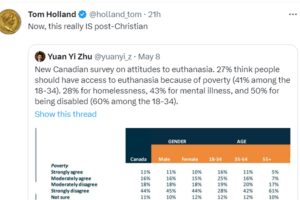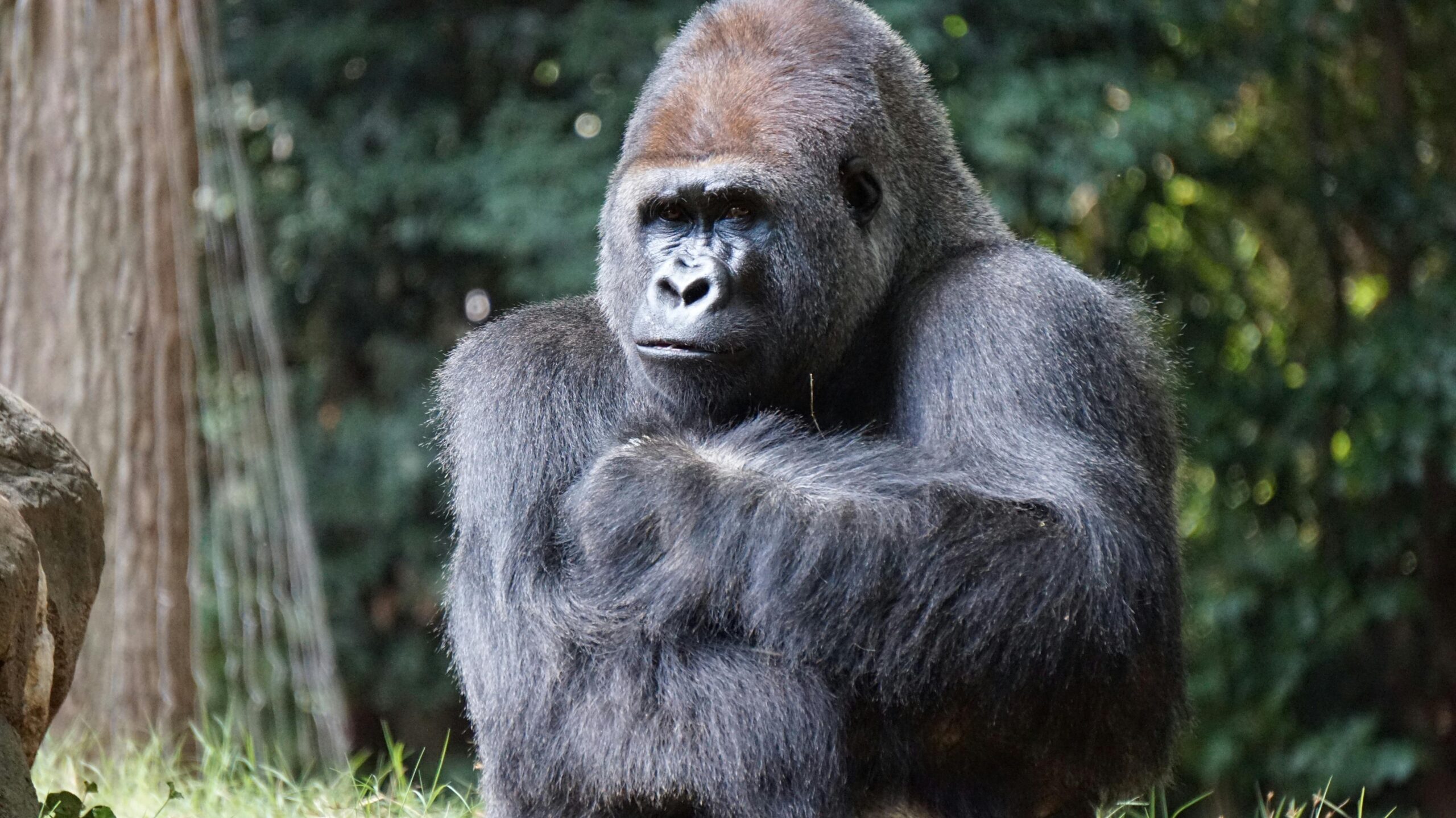June 21, 2025
The Death Culture of the UK
The Death Cultures
UK legislators love death. What else to make of a couple of weeks in which, first, abortion was permitted for any reason up to the point of birth (“permitted” simply means that what is already happening will no longer be criminalised).
Sex-selection included.
That’s right. The United Kingdom is perfectly happy to take on the biases towards girls – and rest assured the majority of those aborted will be girls – that has plagued some of their migrant populations over the past decades, and that has, across swathes of South East Asia and the Middle East, resulted in less women in many populations. Pagan Rome is back with a vengeance.
And then there is the latest – though not fully through the UK Parliament – push to end life for the terminally ill. Well I say the “terminally” ill at this point, because as we know it never ends there. It’s astonishing that the UK legislation promises to fully fund this state-sanctioned suicide. If only it could be so generous with its palliative care in its failing NHS, as noted by the Anglican Bishop of London, Dame Sarah Mullally who states about the legalisation:
“It does not prevent terminally ill people who perceive themselves to be a burden to their families and friends from choosing assisted dying. And it would mean that we became a society where the state fully funds a service for terminally ill people to end their own lives but, shockingly, only funds around one third of palliative care.”
Elder abuse is bad enough. And now this. We have an ageing population, a health funding shortage, a housing shortage, and an aged-care facility shortage. Come on gran, do what is right by the family and the state!
We can only imagine where this ends up. Actually we don’t have to only imagine. We know where it ends up. Just last year in the Netherlands a 29 year old woman who had suffered mental illness ended her life with state approval. And that process began when she was 25.

Think about that. A woman a year older than my daughter went down the path of killing herself and her government – which most likely spends billions on mental health care – permitted it. Deep irony there. So let’s not pretend – and let’s call out contra the deniers – that this is not where it will end for the UK. Every time such legislation is proposed anywhere, the scorners come out and deny that it means anything other than hastening what was about to happen. Utter tosh. Call out the hypocrisy.
Slippery Slopes and Watersheds
But back to the UK. The pincer move of “start of life” and “end of life” is not about slippery slopes. I hope we know that. It’s about watersheds – boundary markers.
You see, a slippery slope argument says that once one decision is made about end of life or abortion, then the creeping legislation that follows becomes more contentious and extreme. But it is like a Chinese fingertrap. You don’t go backwards, only forwards. You slide only in one direction.
Yet while “slippery slope” is the partial truth, it’s the watershed argument that counts. You know what I mean by “watershed” in this instance don’t you? In geography a watershed is that area into which water drains from a high point of ground, typically a mountain range or hill.
If rainfall land on one side of the hill it can end up in a watershed a long way away from rainfall that lands close to it, but on the other side of the hill. Two equal and opposing directions. It’s all very binary.
What is the watershed in the UK – and indeed across the West – at the moment. It’s this: There are two opposing views of what it means to be human, and therefore what it means to flourish as a human. Or as I have put it elsewhere: “What a human is, What a human is for, and, Who a human is for?”
The secular understanding of this has come adrift from the historically Christian understanding of this – an understanding that held life – all life – was sanctified by virtue of each life being made in the image of God.
Such a view is no longer the case. It’s no longer the air we breathe even. Which is why we have moved so much on these issues. I well remember the days in primary school being told that a baby is just a clump of cells that can be “scraped” out of a womb (yep we got told that back in the 1970s).
But what does a partial birth abortion require? Glad you asked, even if you did not. Here is a motion plus an amendment from 30 years ago in the same UK parliament that such discussions are happening today:

There was pushback even then. Read this carefully. Let it sink it.
That this House notes that earlier this year the Royal College of Obstetricians and Gynaecologists recommended that, in late abortions, doctors should ensure the foetus was killed at the outset (suggesting injections of potassium chloride in to the heart in cases of drug-induced abortions) in order to avoid possible charges of murder should the child be born alive and subsequently die; further notes that the College is opposed to outlawing the technique of partial birth abortion used in late pregnancy; notes that this technique involves withdrawing the foetus through the birth canal until only the head remains inside when the bottom of the skull is pierced and the brains sucked out, thus collapsing the head; notes that this would conform with the College guidelines to ensure that the child was born dead; further notes that replies to parliamentary questions clearly show that abortion notification forms fail to specify if abortions are carried out by this method; notes that even before the tenth week of pregnancy foetal structures relating to pain are present and functional, meaning that the child could die in agony; and calls for the immediate banning of this barbaric technique excepting in cases of immediate necessity to save the life of the mother if no other means is possible.
Did you get the point? Even back then the Royal College was opposed to removing what the amendment already called “this barbaric technique”. And did you note that the motion declared that such late term abortions were rare and were generally undesired by the mother and only in the case of life-saving situations? Even thirty years ago it was known that under ten weeks, foetal structures relating to pain are present and functional.
Well it’s that restriction that is being lifted. Life-saving situations is no longer the issue. The only issue is does the mother want the baby, for any reason at all. Now, granted, perhaps this is a fairly rare situation, but let’s add the slippery slope and the watershed together and we know where it heads. It will become commonplace. That’s the way it is.
I’ve quoted him often, but I will do so again because we don’t seem to get the gravity of where we are headed. Stanley Hauerwas said this a decade or so ago, of what will be the reality in our society and for the Christian community going into the future:
I say that in a hundred years, if Christians are identified as people who do not kill their children or the elderly, we will have done well. Because that’s clearly coming.
Clearly here. Hundred years was way too optimistic. I am hopeful that by the time that UK residents are sick of a death culture, and worried about how it might come for them, that the church will be a beacon of life and light.
The Logical Conclusion of You Do You
It’s clear then that for Christians, as we proceed through the 21st century that, tide of faith aside, this is where our culture is going. The return to Christianity will be, I believe, more of a steady trickle. It will take many decades – if ever – to have a shift of thinking in our wider culture on these matters, and certainly much longer in our legislative processes.
These matters are not the same as the “trans” issue, which has found it harder to get a grip into the general imagination simply because it feels like a reality bridge too far.
But what is at the heart of these heartless directions? I was discussing these turns of events the other day with a ministry friend and I asked him why he thought these things were happening at such extreme depths and at such alarming rates. His take on it – which I pushed back on – was that we don’t value human life the way we used to – image of God and all that.
But that’s only part of the story. The centre to the story is that when you have swum all of your life in the waters of extreme expressive individualism, it’s not simply the absence of imago Dei that is the problem, it’s the presence of an idea that any restriction of someone’s freedom to do what they wish with their bodies, is violence towards their agency.
There is no longer any sense of community or of tradition. You are a community of one and a tradition that starts with you. Even if we wished to argue against such hyper-individualist views, we have no common ground upon which to argue it any longer.
And that is only going in one direction. Historian Tom Holland pointed it out a few years back when he re-tweeted these stats from Canada:

What’s most instructive about all of these stats is that approval ratings for such baldly life-rejecting and – on the surface, brutal, ideas, ramps up among 18-34 year olds. Younger people are more likely to approve more end-of-life interventions by the government than older people.
And that’s not because they are villainous rogues who hate life. It’s because they have been marinated in extreme individualism. These 18-34 year olds will be the generation that creates and votes for our future legislative changes on these matters. And they will craft, and vote for, more extreme measures than even we have today because that’s where the watershed will take the water.
Who is to say that you should not be allowed to kill yourself – approved by the government and in all likelihood organised by and paid for by the government – for whatever reason you so desire? After all, isn’t that the logical extension of a “You Do You” culture?
As Australian pastor and author, Mark Sayers has said in the past, this is the “beautiful apocalypse” – the facade of a free culture in which we are permitted to live our lives our own way. We have no sense of a common bond, no ability to call people to a shared vision of human flourishing, much less a common understanding of what a human is and what a human is for.
Written by
There is no guarantee that Jesus will return in our desired timeframe. Yet we have no reason to be anxious, because even if the timeframe is not guaranteed, the outcome is! We don’t have to waste energy being anxious; we can put it to better use.
Stephen McAlpine – futureproof
Stay in the know
Receive content updates, new blog articles and upcoming events all to your inbox.



